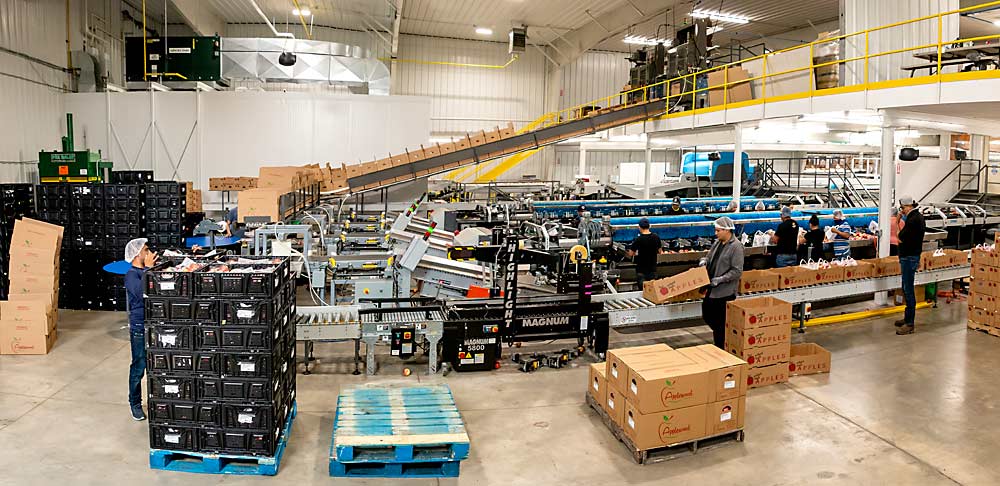
It was inside the Borton Fruit packing house in Yakima, Washington, where — marveling at the size and sophistication of the newly built, 550,000-square-foot facility, which I was lucky enough to tour in November 2019 — a question occurred to me: How can Michigan, or New York, or Pennsylvania, or Virginia, or any other apple state east of the Mississippi River, compete with this?
Considering the fact that the Borton facility is but one of dozens of packing houses in Washington state, I did some mental math: According to the Washington Apple Commission, the state industry packed 134 million 40-pound boxes of fresh apples during the 2019–20 season. On average, nearly a third of the state’s annual fresh output is exported. Keeping in mind all the nuances of fluctuating crop sizes, the fluctuating percentage of apples that go to processing and the difference between a 40-pound box and a 42-pound bushel — that one-third of the Washington fresh apple crop looks roughly equivalent to the total fresh crop from the Midwest and East.
Which led to my next question: How can the fresh apple industry in Michigan, or New York, or Pennsylvania, or Virginia, or any other state east of the Mississippi River, even survive?
After conducting interviews for this story, I learned I’m not alone in asking these questions. Plenty of other people in the Midwest and East have toured packing houses in the Pacific Northwest and have come away overwhelmed.
“It makes me want to run down to the drug store and grab a roll of Tums,” said Scott Swindeman, president of Applewood Fresh Growers, a packer/shipper/marketer based in Michigan. “It’s mind-boggling. It’s a totally different world from what we have back here.”
But the same people told me that despite the vast difference in scale, the apple industries in the Midwest and East can still compete with Washington. Pressure from the Pacific Northwest has driven them to focus on their competitive advantages. It’s also forced them to continually improve their quality and efficiency.
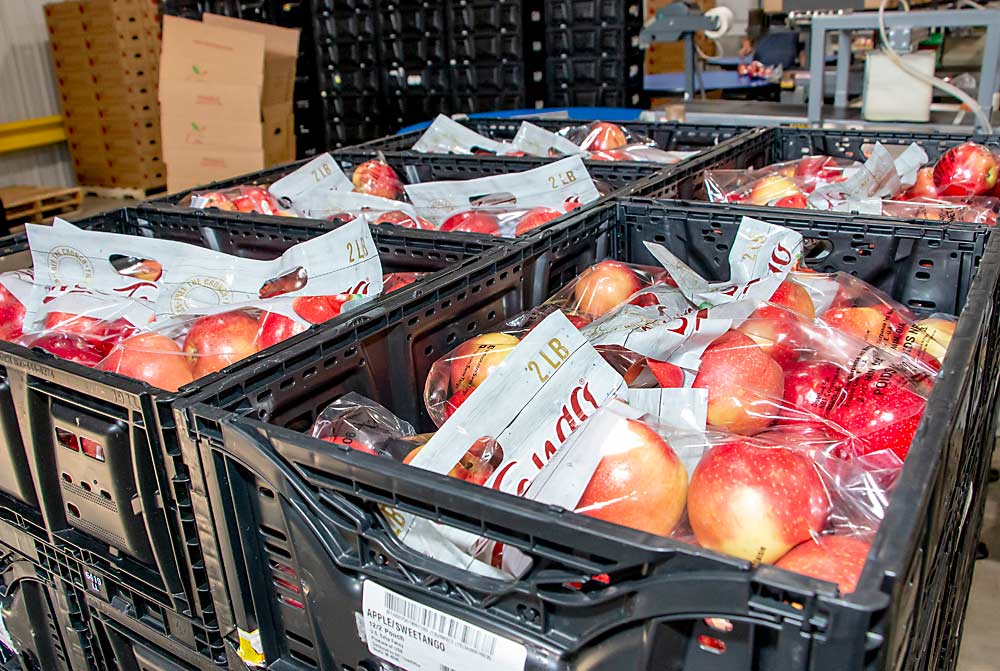
Price pressure
By December, the Washington industry was estimating its 2020–21 crop at 121.7 million boxes, smaller than initially thought, said Todd Fryhover, president of the Washington Apple Commission.
As a result, fewer Washington apples were being shipped east, and Midwestern and Eastern packers weren’t feeling as much pressure as they felt in 2019, when a wave of Washington apples flooded Eastern markets and lowered prices. But 2020 was an unusual year, with abrupt shifts in consumption driven by the coronavirus pandemic.
Long-term trends point toward bigger Washington crops and flat or declining domestic apple consumption, said Milt Fuehrer, CEO of BelleHarvest Sales, another Michigan packing/marketing operation.
“If Washington continues to grow more apples, those apples will have to go somewhere,” Fuehrer said. “If not overseas, they will have to send them east.”
Population proximity
The most frequently mentioned competitive advantage over the Pacific Northwest was distance to markets. Most packers east of the Mississippi are within a day’s drive of the majority of the U.S. population — making their cost of freight much cheaper.
Shipping a box of apples from the West Coast to the East Coast takes days, and generally costs $7 to $10 a box. In comparison, New York packers spend $2 to $5 a box shipping apples to Eastern markets, said Matt Wells, vice president of operations and food safety for New York Apple Sales, which markets apples for nine packing sheds.
Michigan has a freight advantage, too, but its position between the East Coast and Pacific Northwest makes it a more direct competitor with Washington, Fuehrer said.
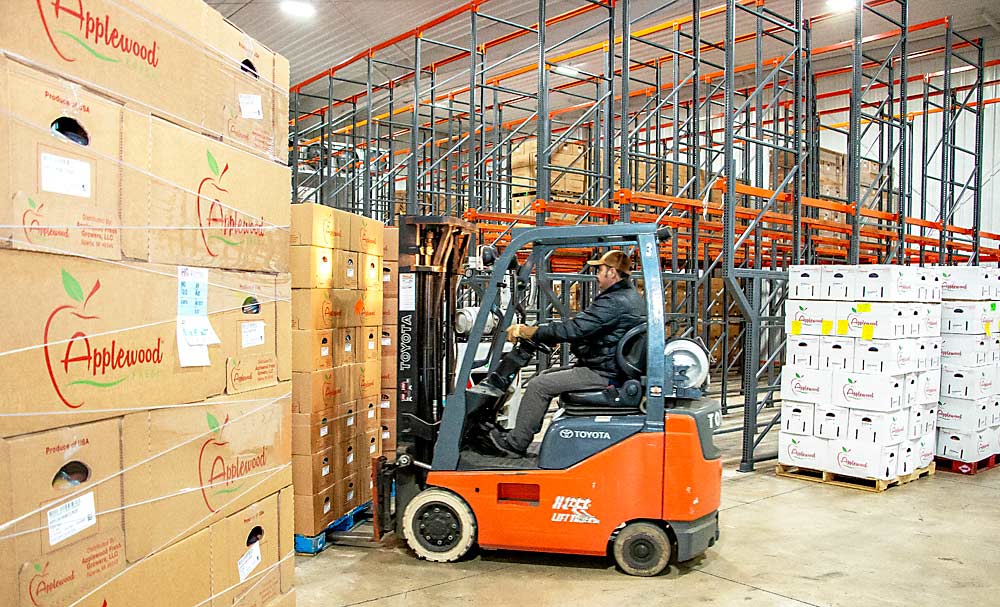
The continuing popularity of the “buy local” movement creates another opportunity for the East and Midwest. Farm markets and U-pick orchards have an obvious advantage there, but the big retail chains also prefer to buy local apples — if they can get them at the right volume.
“Shoppers really want a local product,” said Brenda Briggs, vice president of sales and marketing for Rice Fruit Co., a large Pennsylvania apple packer/marketer. “They want to know where their food is coming from and to support local businesses. That’s been more strongly reinforced by the pandemic.”
The coronavirus pandemic drove several changes in consumer preferences.
“The demand for bagged apples has increased dramatically,” said Bill Dodd, executive director of the Premier Apple Cooperative, a group of Eastern growers that shares weather and market information. “Buying habits have changed considerably. We can benefit from that.”
“The bagged thing has been huge for us,” said Mark Boyer, owner of Ridgetop Orchards, a Pennsylvania grower and packer. “We can’t get enough of them.”
Swindeman said bagged apple purchases are an advantage right now, but he’s not sure if that trend will continue when the pandemic ends.
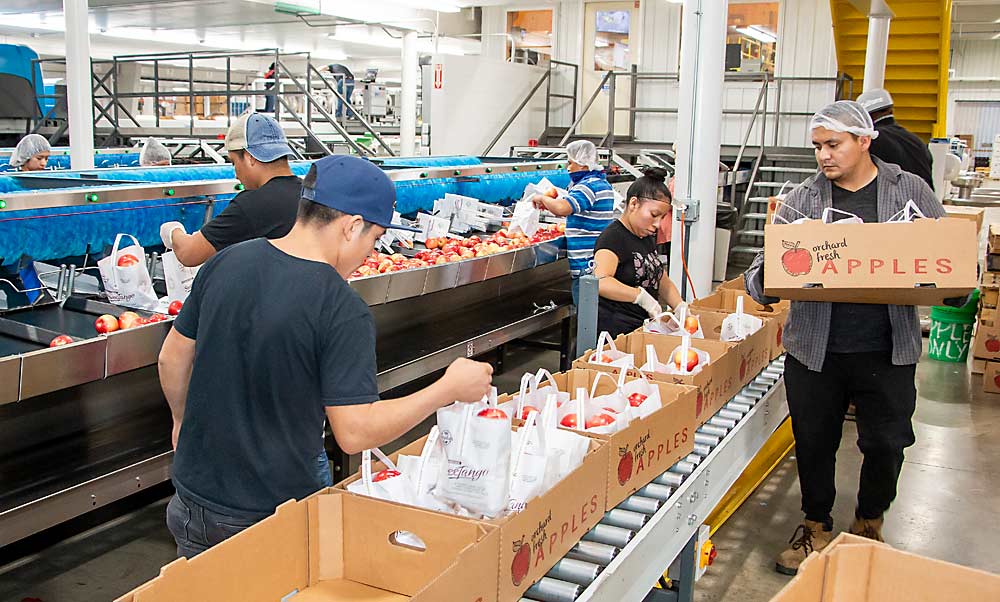
Consolidation, cooperation
After a round of consolidation in 2019, three Michigan companies now handle more than 80 percent of the state’s fresh apple sales. The mergers were driven in large part by consolidation on the retail end and by retailers’ desire to deal with fewer sales desks.
Midwestern and Eastern industries will probably see more consolidation in the future, with smaller players merging with larger or being bought out altogether, said Nick Mascari, president of BelleHarvest Sales.
There hasn’t been much consolidation in New York in the last decade or so, but Wells said it might start happening soon. The current business structure can’t hold for much longer.
“We might be at a tipping point,” he said. “Washington puts pressure on the whole industry. Even on themselves.”
Dodd said consolidation in the apple industry has definitely ramped up in the last few years.
“If you’re not getting bigger and partnering with other people, you’re probably at a disadvantage,” he said.
Cooperation is another survival strategy, said Phil Glaize II, owner of Glaize Apples, a Virginia grower/packer/marketer. If a customer wants a mixed load of varieties by the next day, and Glaize doesn’t have one or two needed items, he can stop the truck at a shed in Pennsylvania and fill out the order there. Such relationships have been helping smaller Eastern packers for decades.
“If the buyer chooses, we will do the logistics of rounding up a load,” Glaize said. “There are also relationships where we work with other shippers to consolidate a buyer’s needs in one shed.”
Sharing information is another strategy. Members of Premier Apple Cooperative have been communicating with each other for more than two decades. Originally made up of New York growers, the cooperative has grown to about 90 members from most of the Eastern states, Dodd said.
Many of those interviewed said superior fruit quality was one of their state’s biggest advantages, but as one of them admitted: “All say that.”
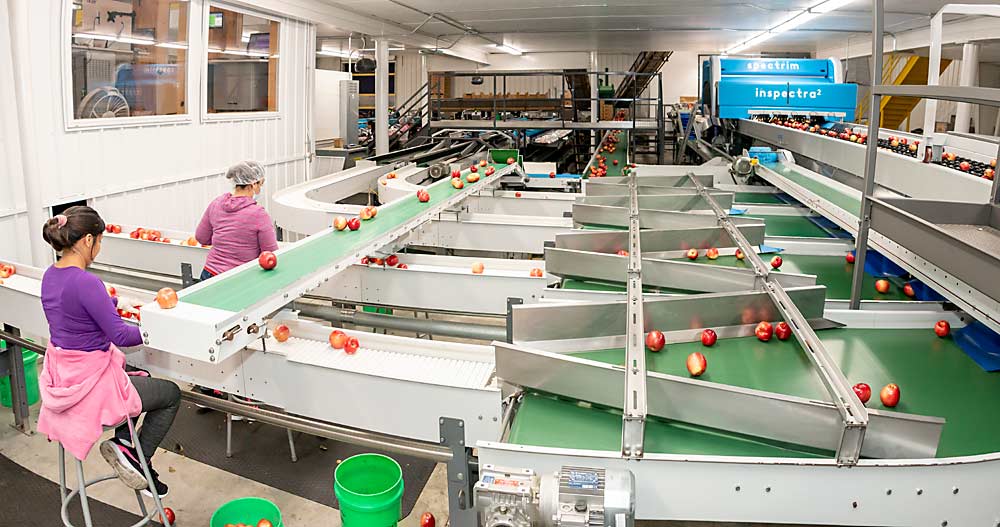
Quality claims aside, one thing is certain: Washington’s sheer scale has driven much of the retail sector’s changing expectations. If Midwestern and Eastern suppliers want to compete for grocery space, they have to supply popular varieties at adequate volume, just like the Pacific Northwest.
“We can do the same thing here they can do out West,” Swindeman said. “Packing lines here are not as big, but we have the same technology to grade fruit for internal and external defects, and we certainly can compete with the wax job they put on their fruit.”
Eastern growers have been “very studious” about refining their varietal mix, with a greater focus on Gala, Honeycrisp, Fuji, Granny Smith and new proprietary varieties, Fryhover said.
A decade ago, Washington so dominated the Granny Smith market that Ridgetop Orchards had a hard time breaking in. But Eastern producers now grow more higher-quality Granny Smiths than they used to and are starting to dominate local markets, Boyer said.
“The question we have on our farm every day is: ‘How can we get more Galas and Granny Smiths in the ground?’” he said.
Thanks to the strength of the buy-local movement, and his farm’s new focus on a handful of varieties that are proven winners with consumers, Boyer doesn’t worry as much about the future.
“As long as we keep sending them beautiful fruit at high pressures and with adequate sugar, we’re going to be fine,” he said. “I’m more optimistic than I was five years ago.” •
—by Matt Milkovich
Are exports the answer?
Could exports boost the apple industries east of the Mississippi River?
Options are limited right now, sources told Good Fruit Grower, and a lot hinges on Washington state’s access to foreign markets.
Apples from Midwestern and Eastern states make up less than 5 percent of total U.S. exports, and new markets for those apples are few and far between, said Will Callis, executive director of the U.S. Apple Export Council, which promotes exports for New York, Michigan, Pennsylvania, California and Virginia.
With the vast majority of exported apples coming from Washington, that state’s access to foreign markets has a major effect on the rest of the U.S. industry. Washington’s access to Mexico, for example — America’s top export market — remains crucial. The more Washington apples shipped south, the fewer shipped east.
But competition for the Mexican market is intensifying. Tariffs on European apples in Mexico are at 20 percent right now but will go down to zero within the next 10 years. And big producers such as Poland and Turkey have lower costs of production than the United States, said Todd Fryhover, president of the Washington Apple Commission, which promotes Washington apples abroad.
He said the commission plans to allocate more resources to preserve the Mexican market.
“We don’t want to see a 12 million- to 15 million-box market decrease by half or so,” Fryhover said.
When India added 20 percent to its existing 50 percent tariff on U.S. apples in 2019, the effects were felt on both U.S. coasts. U.S. exports to that country declined considerably, with more European exports filling the gap, Callis said.
Europe is stepping up its trade agreements and becoming more of a competitor on the world stage, Fryhover said.
Callis said Poland, Europe’s largest producer, is expanding apple production and aggressively seeking new markets. And European countries have an advantage over the United States: European Union regulations allow very few U.S. apples to enter Europe, but European apples have access to most of the markets to which the U.S. has access.
He said options for Midwestern and Eastern exporters are limited right now. They’re testing out the Brazilian market. The United Kingdom leaving the EU creates another potential opportunity. The U.K. was a big market for East Coast apples in the past, but EU regulations mostly closed it off. If the U.K. decides not to adhere to EU regulations in the future, that could reopen its market to U.S. apples.
Trade troubles drive Washington to seek other export outlets, sometimes at the expense of other states. Israel is the “most glaring example,” Callis said. Being closer to Israel, Eastern states have a shipping advantage, but shipments have been declining lately as more Washington apples show up in that market.
A trade advantage between the two regions comes down mostly to geography and logistics. The Pacific Northwest is closer to major markets such as Mexico, China and Southeast Asia, so it costs less to ship there. Eastern states are closer to large Canadian markets, the Middle East, Central America and the Caribbean. India is roughly in the middle, making it an opportunity for both coasts — if it ever lowers its tariff, Callis said.
—M. Milkovich

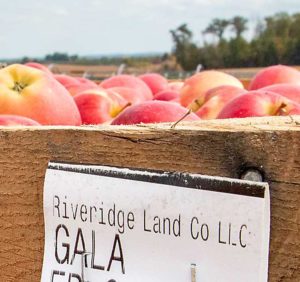





Leave A Comment